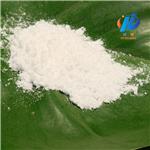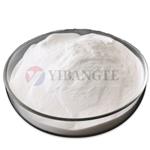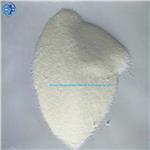- L-Pyroglutamic acid
-

- $50.00 / 1kg
-
2024-04-18
- CAS:98-79-3
- Min. Order: 1kg
- Purity: 99.10%
- Supply Ability: 5000kg
- L-Pyroglutamic acid
-

- $0.00 / 1kg
-
2024-03-29
- CAS:98-79-3
- Min. Order: 1kg
- Purity: 99%
- Supply Ability: 50000kg
- L-Pyroglutamic acid
-

- $15.51 / 1kg
-
2023-11-15
- CAS:98-79-3
- Min. Order: 1kg
- Purity: 99%
- Supply Ability: 100kg
|
| | L-Pyroglutamic acid Chemical Properties |
| Melting point | 160-163 °C(lit.) | | Boiling point | 239.15°C (rough estimate) | | alpha | -27.5 º (c=10, 1 N NaOH) | | density | 1.3816 (rough estimate) | | vapor pressure | 0.002Pa at 25℃ | | refractive index | -10 ° (C=5, H2O) | | storage temp. | 2-8°C | | solubility | H2O: 1 M at 20 °C, clear, colorless | | form | Crystalline Powder | | pka | 3.32(at 25℃) | | color | White to off-white | | PH | 1.7 (50g/l, H2O, 20℃) | | Odor | wh. crystal, odorless, sl. acidic taste | | optical activity | [α]20/D 10.5±1°, c = 5% in H2O | | Water Solubility | 10-15 g/100 mL (20 ºC) | | Merck | 14,8001 | | BRN | 82132 | | Stability: | Stable. Incompatible with bases, acids, strong oxidizing agents. | | LogP | -1.233 at 20℃ | | CAS DataBase Reference | 98-79-3(CAS DataBase Reference) | | NIST Chemistry Reference | Pidolic acid(98-79-3) | | EPA Substance Registry System | 5-Oxo-L-proline (98-79-3) |
| Hazard Codes | Xi | | Risk Statements | 36/37/38 | | Safety Statements | 26-36-37/39 | | WGK Germany | 3 | | RTECS | TW3710000 | | F | 21 | | TSCA | Yes | | HazardClass | IRRITANT | | HS Code | 29337900 |
| | L-Pyroglutamic acid Usage And Synthesis |
| Characteristics and Application | L-pyroglutamic acid is an amino acid that occurs naturally in the body. It is present in the brain, spinal fluid, skin and blood.
pyroglutamic acid is one of the major components of natural moisturizing factor of the skin, its moisturizing ability is far stronger than glycerin and propylene glycol. Moreover, it is non-toxic, non-irritating, and is an excellent raw material for modern skin care, and hair care cosmetics. Pyroglutamic acid also has inhibitory effect on the tyrosine oxidase activity, and thus preventing "melanoidins" substance from being deposited in the skin, and having a whitening effect on the skin. It has a keratin softening effect which can be used in nail cosmetics.
In addition to be applied in cosmetics, L-pyroglutamic acid derivatives can also have reaction with a number of other organic compounds for synthesis of derivatives. It also has some special effect on the surface activity and brilliant effect. Moreover, it can also be used as surfactants for detergents; as a chemical reagent, it can be used for the resolution of racemic amines; it can also be used as a kind of organic intermediates. | | Pyroglutamic acid | Pyroglutamic acid is a kind of based 5-oxo-proline. It is produced by the dehydration and formation of intramolecular amide bond between the α-NH2 group and γ-hydroxy of glutamic acid; the molecule can also be produced from glutamine by losing its intramolecular amine group. The condition of glutathione synthetase deficiency can cause the anemia of pyroglutamic acid with a series of clinical symptoms. Pyroglutamic acid anemia is a kind of organic acid metabolic disorder disease caused by glutathione synthetase hyperlipidemia. Clinical manifestations: disease onset occurs within 12 to 24 hours of born with progressive hemolysis, jaundice, chronic metabolic acidosis, mental retardation; urine containing pyroglutamic acid, lactic acid, α-deoxy-4-hydroxyphenyl acetyl acid lactone. For treatment, based on the actual symptoms, pay attention to adjust the diet after yearling.
The above information is edited by the Chemicalbook of Dai Xiongfeng.
| | Preparation | L-pyroglutamic acid is formed by removing one intramolecular water molecule in the L-glutamic acid; the preparation process is simple with the key step being the control of the temperature and dehydration time.
(1) Add100 g of L-glutamic acid into a 500-ml beaker; heat the beaker in an oil bath until the temperature was raised to 145~150 °C, incubate for 45 minutes to perform dehydration reaction. The dehydrated solution was brown.
(2) After the end of dehydration reaction, pour the solution into a volume of about 350 ml of boiling water with a solution of all further being dissolved in water. Cool to 40~50 °C, add appropriate amount of activated carbon for decolorization (repeated twice) to obtain a colorless transparent solution.
(3) directly heat and evaporate the colorless and transparent solution of the step (2) is a colorless and transparent solution for concentration to a half of the previous volume and then continue for concentration in a water bath to a volume of about 1/3 of the previous solution, and then stop heating; have it slightly cooled in the hot water bath for crystallization; the colorless prisms can be obtained after 10 to 20 hours.
The applied amount of L-pyroglutamic acid in cosmetics should depend on the formula. This product can also be applied to cosmetic in the form of 50% concentrated solution.
| | Chemical Properties | It is colorless crystals with the melting point being 162-163 °C; it is soluble in water, alcohol, acetone and acetic acid, slightly soluble in ethyl acetate, but insoluble in ether.
| | Uses | L-Pyroglutamic acid is used in the synthesis of:
Nonproteinogenic amino acids such as (3S,4R)-3,4-dimethyl-L-pyroglutamic acid and (3S,4R)-3,4-dimethyl-L-glutamine.
Chiral N-heterocyclic carbenes (NHCs) as catalysts for the asymmetric dimerization of alkylarylketenes to give the corresponding α-quaternary β-alkylidenyl-β-lactones.
It is also used in the total synthesis of (−)-stemoamide and celogentin C.
It can be used as a kind of intermediates of organic synthesis as well as food additives.
It is used in food, medicine, cosmetics and other industries. | | Production method | There are semi-synthetic methods, enzymatic conversion method and total synthesis method. Currently the major approach of industrial production is the semi-synthetic method with glutamic acid being the raw material. Have the 42% of glutamic acid solution heated at 140 °C for 3h to obtain the reaction solution with L-pyroglutamic acid being the major component. The reaction solution further undergoes concentration under reduced pressure, crystallization, washing, and drying to obtain the L-pyroglutamic acid with the conversion rate being 94%.
| | Chemical Properties | L-pyroglutamic acid has its scientific name being L-2-pyrrolidone-5-carboxylic acid. Precipitation from ethanol and petroleum ether mixture were colorless orthorhombic bipyramid crystals with the melting temperature being 162~163 °C. It is soluble in water, alcohol, acetone and acetic acid, slightly soluble in ethyl acetate, and insoluble in ether. Specific rotation-11.9 ° (c = 2, H2O). It is produced from 42% aqueous solution of glutamic acid which subjects to heating dehydration, concentration, crystallization, washing and drying to obtain L-pyroglutamic acid. | | Uses | A building block for pharmaceuticals and asymmetric synthesis | | Uses | In the resolution of racemic amines. | | Uses | L-Pyroglutamic acid is an amino acid that is used in the synthesis of peptides. It has also been observed to convert when placed at the N-terminus in vivo to create IgG2 antibodies. | | Definition | ChEBI: An optically active form of 5-oxoproline having L-configuration. | | Flammability and Explosibility | Not classified | | Purification Methods | Crystallise S-pyroglutamic acid by dissolving it in boiling EtOH (20g in 100mL), cooling and after a few minutes additing pet ether (b 40-60o, 120mL), then after 5 minutes adding a further 120mL, and coThis has m 155.5-157.5o and [�] D -11.4o (c 4.4, H2O) [Hardy Synthesis 290 1978, Pellegata et al. Synthesis 614 1978]. The NH4 salt has m 184-186o (from EtOH). [Beilstein 22/6 V 7.] |
| | L-Pyroglutamic acid Preparation Products And Raw materials |
|